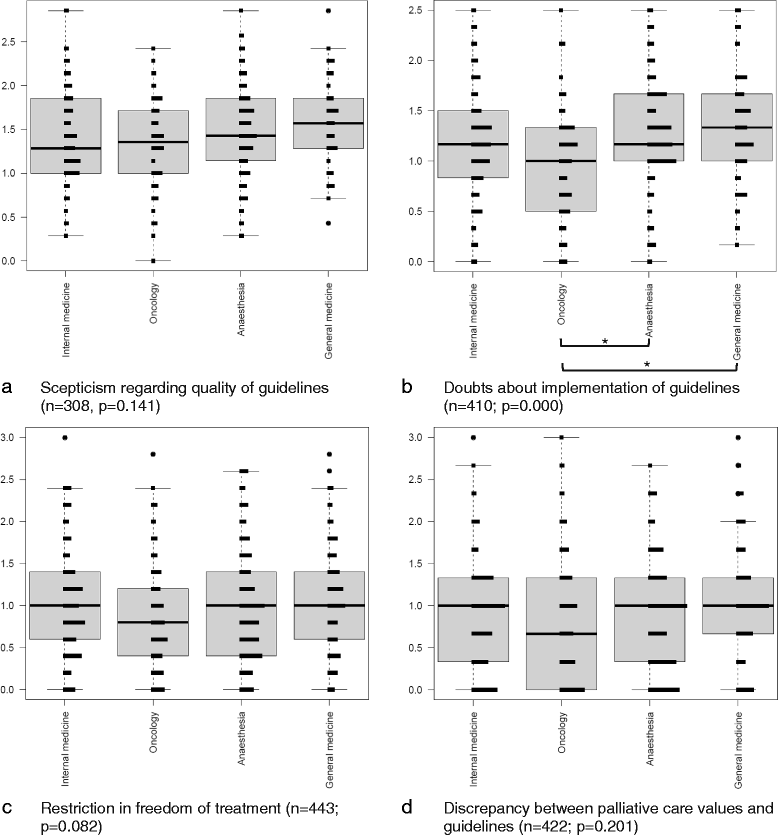Critical attitudes and beliefs towards guidelines amongst palliative care professionals - results from a national survey
- PMID: 28327170
- PMCID: PMC5359819
- DOI: 10.1186/s12904-017-0187-y
Critical attitudes and beliefs towards guidelines amongst palliative care professionals - results from a national survey
Abstract
Background: Little is known about palliative care professionals' attitudes towards guidelines. In 2015, the German Association for Palliative Medicine (DGP) published an evidence based guideline for palliative care in adults with incurable cancer. Before publication we conducted a national survey among members of the DGP to detect possible barriers and facilitators for its implementation. The aim of the present publication was to evaluate critical attitudes and beliefs which could hinder the effective implementation of the new guideline and to evaluate differences within professional groups and medical specialisations.
Methods: This web-based online survey was addressed to all members of the DGP in summer 2014. Twenty-one questions concerning attitudes and beliefs towards guidelines were a priori developed to represent the following topics: scepticism regarding the quality of guidelines, doubts about the implementation of guidelines, restrictions in treatment options through guidelines, discrepancy between palliative care values and guidelines. Differences within professions and specialisations were tested using Kruskal-Wallis tests.
Results: All 4.786 members with known email address were invited, 1.181 followed the link, 1.138 began to answer the questionnaire and 1.031 completed the questionnaire. More than half of participating members were physicians and one third nurses. Scepticism regarding the quality of existing guidelines was high (range 12.8-73.2%). Doubts regarding practical aspects of guidelines were less prevalent but still high (range 21.8-57.6%). About one third (range 5.4-31.4%) think that guidelines restrict their treatment options. In addition, 38.8% believed that guidelines are a kind of cookbook and restrict the flexibility of individual patient care. The majority saw no or little discrepancy between palliative care values and guidelines (range 68.4-82.6%). There were relatively small but significant differences between professions and specialisations.
Conclusion: The person-centred and individual approach of palliative care does not seem to contradict the acceptance of guidelines. Main barriers were related to scepticism regarding the quality of guidelines and the implementation of guidelines in general.
Keywords: Attitudes and beliefs; Germany; Guidelines; National survey; Palliative care.
Figures


References
-
- World Health Organization . Definition of palliative care. 2002.
-
- S3- Leitlinie Palliativmedizin für Patienten mit einer nicht heilbaren Krebserkrankung. http://leitlinienprogramm-onkologie.de/Palliativmedizin.80.0.html. Accessed 2 Mar 2017.
MeSH terms
LinkOut - more resources
Full Text Sources
Other Literature Sources
Medical

